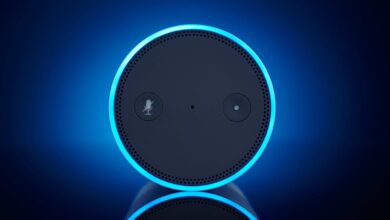Red Hat Infuses Lightspeed Generative AI Across Cloud Platform And Tools

Matt Hicks, president & chief executive officer, Red Hat.
Red Hat changed. The company that we thought of back in the 1990s was thought of as an open source operating system and software development tools purist, with a hard-core geek following that had a penchant for late-night coding sessions, soda and pizza. But Red Hat grew… and throughout the post-millennial years the company became known for its ‘composable’ computing capabilities, perhaps even before we started talking about cloud containerization and orchestration. As the company’s hybrid cloud muscle became even more apparent, IBM acquired Red Hat for precisely that reason and the industry waited to see what the next Red Hat would look like.
Surprisingly (although actually, unsurprisingly to those who knew the steadfast nature of Red Hat employees and users), the corporate acquisition consumption feast didn’t exactly happen i.e. when large tech buyouts occur, the new parent company typically strips back its purchase, takes the tastiest cuts of meat, retains the original company name as a sub-brand throughout the first year for politeness… and then swallows and burps.
Inside IBM, Red Hat is still Red Hat and it always told us it was going to be.
Looking at where the company is today, Red Hat is the generative AI hybrid cloud development, orchestration and Infrastructure-as-Code (IaC) management company with the original open source Red Hat Enterprise Linux (RHEL) still very much in place and in use. The organization’s latest platform updates tell the story of a firm still staunchly focused on the needs of software engineers, systems architects and operations team staff. Let’s now ask what’s new, why does it matter and how much of what Red Hat does today still draws on its heritage from the time when users who needed to know something were told to go and ask the man in the red hat?
Following the flow that drives every enterprise software platform company’s current progression and development roadmap, Red Hat is infusing its core services and solutions with generative Artificial Intelligence (gen-AI). The company’s Red Hat Lightspeed technology will now expand generative AI capabilities to Red Hat’s Linux and hybrid cloud application platforms. Red Hat Lightspeed is a generative AI service with automation-specific foundation models, it uses Natural Language Processing (NLP) to turn written prompts into code snippets and is designed to help make complex computing tasks more efficient and accessible across employee skill levels. The technology itself first manifested itself in the Red Hat Ansible Automation Platform.
The concept here hinges around an ability to contextually apply Red Hat’s knowledge of open source technologies in mission-critical hybrid-cloud environments to their specific situations, with the generative AI guidance factor.
“This year’s [work] is zoned in on the intersection of open source and AI. As we know, the rate of innovation acceleration is surging… and with the explosion of choices in AI technology, we see so many models now available. Training techniques that once ran on systems costing hundreds of millions of dollars are now running for thousands. Academia has now embraced open source in ways that it failed to do so a decade or so ago – and that has helped us to now go from a breakthrough [innovation idea] to a working AI model within weeks. As the open source ecosystem now broadens within the wider realm of AI, the reach of these technologies will expand across the planet. Breakthroughs that happen at MIT today will be deployed in working organizations in India tomorrow,” said Matt Hicks, president & chief executive officer, Red Hat, speaking to press and analysts this May 2024.
“Having witnessed the growth of open source for many years, we now believe in the power of openness throughout – from open licensing, to open data and open contributions – but the ability to contribute to a model has yet to be solved and barriers do doing a fine tune to these [big] models are too high and Red Hat wants to address this. As we move forward and develop skills to train smaller models that are more specifically aligned to the unique needs of a business, we will make sure organizations can keep their data private while still making sure engineers can make contributions to open models,” added Hicks. “As the open source element expands in the AI universe, it will be a force multiplier. Why? Well, I first fell in love with technology when I was first exposed to Linux and learned that I could change and contribute to the products being created – so my passion for technology is now reinvigorated by seeing what AI can do now. I feel fortunate to be experiencing the convergence of AI and open source.”
Rolling out gen-AI across any vendor’s wider platform is no point-and-click process i.e. Red Hat will have spent time working out where AI automation can help software engineers with core actions such as simplifying application lifecycle management and resourcing scaling. We already know Red Hat OpenShift as a hybrid cloud application platform powered by Kubernetes; we also know that software teams with varying roles and skill sets commonly adopt it. What we now get is OpenShift Lightspeed with gen-AI to help even novice-level engineers deploy traditional and cloud-native applications on OpenShift clusters.
In basic terms, it’s the cloud provisioning-to-deployment and then onward management lifecycle simplified.
Autoscaling vs. stick-shift
What simplification actions are being brought to bear here?
Imagine a cloud cluster that has just hit capacity i.e. it can’t process, compute, analyze or store any more data to serve application tasks or database instructions. The gen-AI in OpenShift Lightspeed will suggest to the IT engineer that autoscaling (adding more cloud power, basically) should be enabled and after assessing that the clusters are hosted on a public cloud, suggest a new instance of the appropriate size. By continuing to assess usage patterns, OpenShift Lightspeed could then suggest taking autoscaling down, once capacity requirements decrease. The intelligent cloud management AI gremlins here can also make additional recommendations such as using GitOps (a repository technology that can make codified IT infrastructure formats reproducible) to save the configuration created here to use across clusters.
“The drive continues with Red Hat powering AI/ML strategies across the open hybrid cloud, enabling AI workloads to run where data lives, whether in the datacenter, multiple public clouds or at the edge. More than just the workloads, Red Hat’s vision for AI brings model training and tuning down this same path to better address limitations around data sovereignty, compliance and operational integrity. The consistency delivered by Red Hat’s platforms across these environments, no matter where they run, is crucial in keeping AI innovation flowing,” stated the company, in a technical product statement.
If we consider the announcement of a new Common Vulnerability and Exploit (CVE): Red Hat Enterprise Lightspeed could flag this alert to an administrator and tell them that a Red Hat Security Advisory (RHSA) has been released with fixes. It can then alert the user (by which Red Hat means the software engineer and sysadmin) that some affected machines are in production (i.e. live and working) and should not be taken down, but that updates can be applied to affected development and staging systems. Finally, Red Hat Enterprise Linux Lightspeed could help the IT team schedule patching for the next production maintenance window, doing all of this through simple commands so that rookie engineers who have limited command line (i.e. real software coding) knowledge can look after cloud deployments.
The IBM Watson factor
As previously noted, the company has of course driven generative AI functions into Ansible. Acquired and lovingly adopted by Red Hat in 2015, Ansible is an open source IT automation engine that automates provisioning, configuration management, application deployment, orchestration and many other IT tasks. In the field of AI model customization & tuning, IBM watsonx Code Assistant now enables Ansible Lightspeed users to use their existing Ansible content to train theie model. Technical staff can improve the quality and accuracy of their Ansible content with code recommendations that are tailored to their organization’s specific needs and automation patterns. Via an administrative dashboard, Red Hat account administrators can view telemetry data around their Ansible Lightspeed usage, including monitoring metrics for gen-AI requests and insights into how end-users (in this case that means people, not developers) are using the service.
The whole fabric of Red Hat’s approach starts to become even clearer when we think about how the company balances cloud services. The company has now collaborated with AI optimization and orchestration company Run:ai to grasp its resource allocation capabilities and bring them to Red Hat OpenShift AI. This is a play designed to help streamline AI operations by optimizing the underlying infrastructure. The message to companies centralizes around a promise to help users to get the most out of AI resources so that they can maximize both human-centric and hardware-driven workflows on a trusted MLOps platform.
Remember, despite the name, MLOps is not Machine Learning for Operations (i.e. IT admins) teams – ML is Operations management for Machine Learning management to help build, tune, deploy and monitor AI-enabled applications and models.
How does this technology work? To explain, first we need to remind ourselves that Graphical Processing Units (GPUs) are the compute engines driving AI workflows, enabling model training, inference and prototyping processes designed to drive experimentation. So GPUs are super powerful, but expensive, particularly when used across distributed computing training jobs and inferencing. Red Hat and Run:ai are working to meet this critical need for GPU resource optimization with Run:ai’s certified OpenShift Operator on Red Hat OpenShift AI, which helps users scale and optimize wherever their AI workloads are located.
“Increased adoption of AI and demand for GPUs requires enterprises to optimize their AI platform to get the most out of their operations and infrastructure, no matter where they live on the hybrid cloud. Through our collaboration with Run:ai, we’re enabling organizations to maximize AI workloads at scale without sacrificing the reliability of an AI/ML platform or valuable GPU resources, wherever needed,” said Steven Huels, vice president and general manager, AI Business Unit, Red Hat.
Run:ai’s cloud-native compute orchestration platform on Red Hat OpenShift AI helps address GPU scheduling issues for AI workloads with a dedicated workload scheduler to more prioritize mission-critical workloads and confirm that sufficient resources are allocated to support those workloads. It also provides improved control over shared GPU infrastructures to enable easier access and resource allocation across data science and software application development teams.
Welcome to the cognitive era
With all these AI-enriched intelligence services surfacing, it’s a wonder that no vendor has tried to label the current age of computing as the new cognitive era, or some such. Spoiler alert, Red Hat did that too. In another collaboration, this time with semiconductor company AMD (the firm styles itself as the ‘high performance and adaptive computing company’, but we know it for its chips), Red Hat has said it is cementing its place in the new cognitive era with a partnership designed to enable AMD GPU Operators on Red Hat OpenShift AI to provide the processing power and performance needed for AI workloads across the hybrid cloud.
A technology, not a person, a GPU Operator uses an operator framework to automate the management of the software components needed to provision GPU. Along with a high-performing and scalable CPU platform, GPUs are essential for both the training and inference phases that drive AI workloads.
“Red Hat is committed to lowering the barrier of entry for AI workloads by harnessing the power of open collaboration and innovation. Together with AMD, we’re democratizing access to leading AI technologies, empowering developers, and enabling organizations to realize their full potential in the AI-driven future,” said Stefanie Chiras, senior vice president fo partner ecosystem success at Red Hat. “AMD GPUs on Red Hat OpenShift AI can make it easier for customers to access, deploy and benefit from a validated GPU Operator, which in turn allows them to streamline AI workflows and bridge existing and potential gaps in GPU supply chains.”
Red Hat further suggests that these hardware accelerator investments, which are critical to the training and fine-tuning of Large Language Models and Foundation Models, can now be used more easily, so we can look forward to building AI applications faster.
More than just Linux
Although a meaty slice, this is just a slice of what’s emanating out of the Red Hat newsfeed wheelhouse at the moment. What is hopefully clear is that this isn’t just the Reg Hat Enterprise Linux (RHEL) operating system organization of old, this is the open source cloud-evolved infrastructure-expansive and now AI-enabled RHEL technology platform and tools company that Red Hat has become. It’s arguably quite pleasing to see a company that was always proud of its nerd-first status still talking directly to software engineers in (mostly) the way it always did.
Yes, there’s an element of blue-suited IBM corporate gloss creeping into some of what Red Hat does; but one might reasonably argue that factor is naturally surfacing with age and maturity rather like a good wine.
A red one, obviously.



